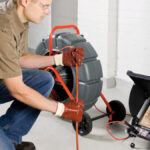A well-maintained driveway in Gainesville not only enhances curb appeal but also plays a critical role in protecting your property investment. While the surface may seem durable and low maintenance, ignoring seasonal upkeep can lead to cracks, wear, and early deterioration. Climate, usage, and material choice all affect how your driveway holds up over time, but it’s seasonal care that ensures long-term performance.
From the intense heat of summer to the cold, wet conditions of winter, each season presents unique challenges that can wear down your driveway if not addressed proactively.
Understanding the Impact of Seasonal Changes
Driveways are exposed to a constant cycle of weather conditions. In hot weather, materials like asphalt can soften and become more prone to ruts and indentations from heavy vehicles. In winter, water can seep into small cracks, freeze, and expand, causing further damage through a process known as freeze-thaw cycling.
Spring and fall, while milder, also bring challenges. Debris buildup, pooling water, and plant growth around the edges can compromise the surface’s structure if not cleaned and cleared regularly. Regularly adapting your maintenance routine to fit the season ensures your driveway remains safe, clean, and durable throughout the year.
Summer: Sealing and Surface Protection
Summer is an ideal time for preventive maintenance. High temperatures allow for sealants and protective coatings to cure properly. Sealing helps protect the surface from UV damage, oil stains, and water infiltration. It also extends the lifespan of asphalt and concrete surfaces by providing a protective layer that reduces the impact of direct sun exposure and heavy use.
For gravel driveways, summer maintenance may involve grading to eliminate low spots and redistributing gravel evenly across the surface. Maintaining proper drainage also prevents erosion caused by summer storms.
Winter: Snow, Ice, and Surface Integrity
Winter weather is particularly hard on driveways. Snow and ice removal must be done carefully to avoid scraping or chipping the surface. It’s advisable to use plastic shovels rather than metal ones and to avoid harsh chemical deicers that can deteriorate concrete over time.
Instead, sand or calcium-based products offer safer alternatives that maintain traction without damaging the material. Prompt snow removal is essential to prevent water from seeping into cracks and freezing, which accelerates expansion and cracking.
Spring and Fall: Inspection and Clean-Up
During spring and fall, it’s important to conduct a thorough inspection of the driveway. Look for signs of cracking, surface deterioration, or standing water. These issues can often be addressed with simple repairs or by adjusting the slope for better drainage.
Regular sweeping or power washing removes organic debris and prevents weed growth in small joints or seams. Fall is also the perfect time to clear out drains and gutters near the driveway, reducing the risk of overflow or erosion during rainy periods.
Material Matters: Planning for Longevity
While seasonal maintenance is key, material selection at the time of installation has a lasting impact. Climate, soil conditions, and usage patterns should all be considered. Understanding how to choose the right driveway material can help homeowners make informed decisions that reduce long-term maintenance needs. Durable options paired with consistent seasonal care yield the best results.
Conclusion
Investing time in seasonal driveway maintenance isn’t just about appearances; it’s a smart strategy for extending the life and function of your driveway. By responding to the unique demands of each season and staying proactive with repairs, homeowners can avoid costly damage and preserve the value of their outdoor surfaces. When paired with proper material choice and attention to detail, a well-maintained driveway will stand strong for years to come.

 How Often Should a Roof Be Replaced?
How Often Should a Roof Be Replaced?  Narra Residences Unveil Supreme Elegance in Singapore’s Dairy Farm Walk
Narra Residences Unveil Supreme Elegance in Singapore’s Dairy Farm Walk  Emergency Roof Repair in Wyoming: What to Do When Disaster Strikes
Emergency Roof Repair in Wyoming: What to Do When Disaster Strikes  Red Flags to Watch Out for When Choosing a Real Estate Agent
Red Flags to Watch Out for When Choosing a Real Estate Agent  How Site Preparation Impacts the Success of Concrete Construction
How Site Preparation Impacts the Success of Concrete Construction  Florida’s Venomous Spiders: What to Know and When to Worry
Florida’s Venomous Spiders: What to Know and When to Worry  Why Homeowners Trust Sewer Camera Inspections for Accuracy
Why Homeowners Trust Sewer Camera Inspections for Accuracy  Modern Tempered Glass Doors Enhance Interiors With Sleek Functionality And Aesthetic Value
Modern Tempered Glass Doors Enhance Interiors With Sleek Functionality And Aesthetic Value  Earning the CCIM Designation: Required Education, Experience, and Industry Commitments
Earning the CCIM Designation: Required Education, Experience, and Industry Commitments 